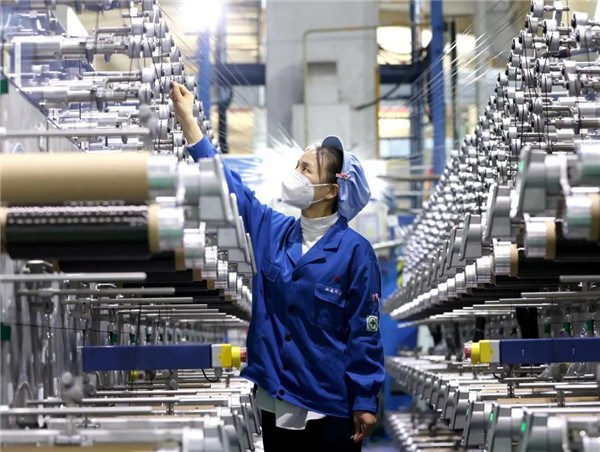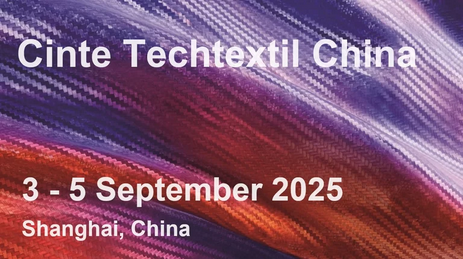
The Production Linked Incentive (PLI) scheme, a government initiative to boost domestic manufacturing, has got mixed results in the Indian textile and apparel industry. While ambitious in its goals, the scheme's adoption by industry players has been sluggish, raising questions about its effectiveness in this crucial sector.
PLI in textiles: A promising start, stuttering steps
Launched in September 2021, the PLI scheme for textiles offered incentives worth Rs 10,683 crore over five years for investments in man-made fiber (MMF) apparel, fabrics, and technical textiles. The aim was to attract investments of Rs 19,000 crore and increase production by Rs 3 lakh crore. Initial response seemed positive, with major players like Reliance Industries and Welspun expressing interest.
However, implementation hurdles and industry concerns have dampened enthusiasm. As of January 2024, only a handful of companies have applied for the scheme, and disbursement of incentives has been slow. As an expert explains, PLI application process is like a labyrinth, especially for smaller players. Simplifying it and offering handholding support are crucial.
And Anita Dongre, Fashion Designer points out the initial PLI scheme focused heavily on MMF, neglecting segments like cotton and home textiles, which are the backbone of our industry. PLI-2 seems like a step in the right direction.
Reasons for the slowdown
Several factors have contributed to the PLI's slow adoption in textiles.
Complex application process: As a stakeholder points out, the application process is like climbing Mount Everest. The documentation is extensive, and approvals take forever. Smaller players like don't have the resources to navigate this bureaucracy.
Stringent eligibility criteria: The minimum investment thresholds are too high for many players. Recovering from the after effects of a pandemic, and they can't risk such large investments without a clear guarantee of returns.
Unclear incentive calculation and disbursement: Moreover there's a lot of ambiguity about how the incentives are calculated and disbursed, points out a textile industry consultant. This lack of transparency creates uncertainty and delays investment decisions.
Existing infrastructural bottlenecks: Issues like power shortages, unreliable logistics, and high import duties on raw materials are major concerns among textile industry players. These add our production costs and erode the appeal of PLI benefits.
Limited scope of PLI-1: The initial PLI scheme (PLI-1) focused on specific segments like MMF and technical textiles, leaving out major segments like cotton and home textiles, which form a larger part of the industry.
PLI in Textiles (as of Jan 2024)
| Parameter | Data | Source |
| Total Incentive Outlay | ₹10,683 crore | PIB |
| Expected Investment | ₹19,000 crore | PIB |
| Expected Production Increase | ₹3 lakh crore | PIB |
| Applications Received | Handful | Industry sources |
| Incentive Disbursed | Minimal | Industry sources |
| Parameter | Target (PLI-1) | Achievement (as of Dec 2023) | Gap |
| Investment | Rs. 19,000 crore | Rs. 3,800 crore | 80% |
| New Jobs | 7.5 lakh | 1.5 lakh | 80% |
| Factor | Impact on PLI Adoption |
| Limited Uptake | Slow progress in achieving scheme targets |
| Meager Payout | Raises questions about scheme's effectiveness |
| Complex Eligibility | Creates entry barriers for SMEs |
| Uncertain Incentive Structure | Discourages potential investors |
| Lack of Infrastructure Support | Hinders production scalability |
| Global Competition | Makes price and quality competitiveness challenging |
Some gained while others lost
Despite its drawbacks some companies, rather big players, managed to make the most of the PLI scheme. Reliance Industries for example, received PLI approval for Rs 5,000 crore investment in polyester filament yarn and fabric manufacturing, showcasing the potential for large players. "The PLI scheme provided the push we needed to expand our domestic manufacturing footprint," says a company spokesperson.
Similarly, Welspun applied for PLI benefits for technical textiles, highlighting the interest in niche segments. "The scheme has the potential to boost India's technical textile industry, which has strategic importance," says the company CEO.
However, smaller players remain hesitant due to the perceived complexity and limited applicability of the scheme. "We're hopeful that PLI-2 will address our concerns," says a representative of a textile industry association representing small and medium enterprises.
PLI-2: Hope for brighter prospects
The launch of PLI-2 in December 2023 aims to address industry concerns by broadening the scope and including cotton textiles, home textiles, and select apparel segments. PLI1 scheme excluded cotton textiles, a major concern for this segment, which accounts for over two-thirds of the industry's production. However, PLI-2 has corrected this. Similarly, home textiles segment, known for its export potential, was initially left out. PLI-2's inclusion offers an opportunity for growth. The complex application process and high minimum investment thresholds pose challenges for smaller players, who are the lifeblood of the industry. PLI-2's relaxed criteria offer some hope.Reducing paperwork and streamlining approvals will work for its benefit. Offering special incentives for smaller players with lower investment thresholds and higher incentive rates in PLI-2 will help in greater adoption.
However, experts are cautiously optimistic about PLI-2's impact. As an expert points out "PLI-2 addresses some key concerns, but the success hinges on its implementation. Timely incentive disbursement and addressing infrastructural bottlenecks are crucial." On similar lines Radhika Chopra, Economist says, the broader scope of PLI-2 has the potential to attract wider participation, but its effectiveness depends on attracting large investments, especially in areas like cotton textiles.
They also suggest for better implementation certain steps need to be take like: streamlining the application process and eligibility criteria; ensuring timely and transparent incentive disbursement; addressing infrastructural bottlenecks and reducing import duties on raw materials; handholding support to smaller players.
Learning from others
India's PLI scheme draws inspiration from similar initiatives in other countries. For example, China's Made in China 2025 plan has been successful in boosting its textile industry, but concerns about labor practices and environmental impact exist. And Vietnam's textile industry has grown rapidly due to free trade agreements and a supportive government, but infrastructure challenges remain. India too can learn from these examples by focusing on ethical and sustainable practices; investing in infrastructure development; creating a skilled workforce.
The textile and apparel industry is crucial to India's economy, employing millions and contributing significantly to exports. A well-designed and implemented PLI scheme has the potential to boost the sector's competitiveness and create jobs. Addressing industry concerns, ensuring a smooth implementation process, and learning from global examples are crucial steps to ensure the PLI scheme's success. Only then can it truly weave a story of growth and transformation for India's textile industry.












